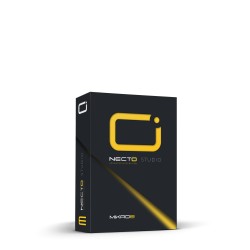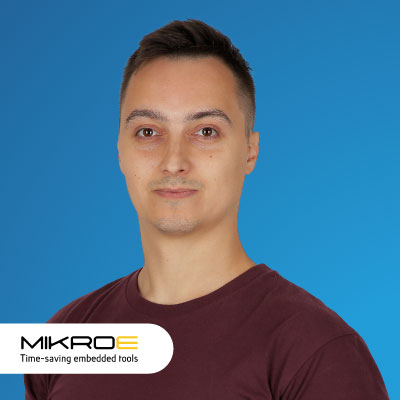Transition Smoothly from mikroC PRO to NECTO Studio
Learn how to move your embedded projects from mikroC PRO to NECTO Studio with ease. This webinar demonstrates the key differences between the two environments, how to configure hardware once for multiple projects, and best practices for an easy transition.
See NECTO Studio in action: create GUIs, configure multi-project hardware setups, and explore advanced debugging and real-time data acquisition tools. Understand how NECTO’s modern IDE simplifies embedded development and accelerates prototyping, so you can migrate projects quickly without losing functionality.
Featured Products:
You Will Learn:
- Key Differences Between mikroC PRO and NECTO Studio
- How to configure hardware setups once for multiple projects in NECTO Studio.
- Using NECTO Studio for GUI creation.
- Best practices for transitioning from mikroC PRO to NECTO Studio.
Agenda:
12:00 - 12:05 (EDT)
Welcome and Brief Introduction
Why NECTO Studio was created and how it redefines embedded development.
12:05 - 12:30 (EDT)
Comparing mikroC PRO and NECTO Studio
A side-by-side analysis of features, toolchains, debugging capabilities, and more.
Practical implications of moving from mikroC PRO to NECTO Studio.
12:30 - 12:35 (EDT)
NECTO Studio in Action
Configuring a hardware setup for multi-project use.
Demonstrating advanced debugging tools and real-time data acquisition.
12:35 - 12:45 (EDT)
Live Transition Demonstration
Migrating a simple `LED Blinking` project from mikroC PRO to NECTO Studio.
Highlighting NECTO’s modern editor and enhanced tools during the process.
12:45 - 13:00 (EDT)
Q&A Session
Address your questions and explore how to leverage NECTO Studio’s full potential.
NECTO Studio Webinar Host
Branko Jaksic -
Creative Roads Manager, MIKROE
Branko spent four years working on the development of NECTO Studio, gaining an in-depth understanding of its advantages and challenges. He then transitioned to the marketing department, where he focuses on helping engineers better understand NECTO Studio and showcasing its full potential.
ABOUT NECTO
NECTO Studio is a complete, cross-platform integrated development environment (IDE) for embedded applications providing everything necessary to start developing, and prototyping, including Click board applications and GUIs for embedded devices. Rapid software development is easily achieved as developers do not need to consider low-level code, freeing them up to focus on the application code itself. This means that changing the MCU or even the whole platform will not require developers to redevelop their code for the new MCU or platform. They can simply switch to the desired platform, apply the correct board definition file, and the application code will continue to run after a single compiling.
ABOUT MIKROE
MIKROE is committed to changing the embedded electronics industry through the use of time-saving industry-standard hardware and software solutions. With unique concepts like Remote Access, One New Product/Day, Multi-Architectural IDE and most recently, the EmbeddedWiki™ platform with more than million ready-for-use projects, MIKROE combines its dev boards, compilers, smart displays, programmers/debuggers and 1850+ Click peripheral boards to dramatically cut development time. mikroBUS™; mikroSDK™; SiBRAIN™ and DISCON™ are open standards and mikroBUS only has been adopted by over 100 leading microcontroller companies and integrated on their development boards.












